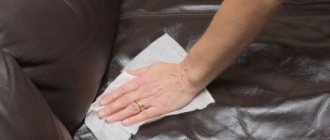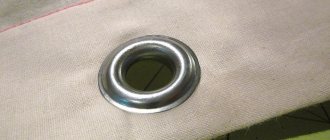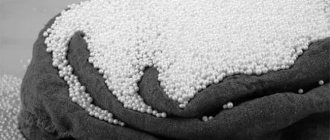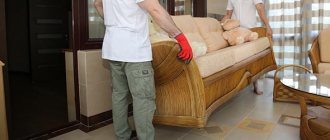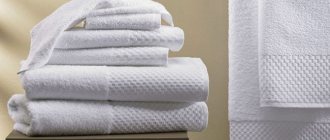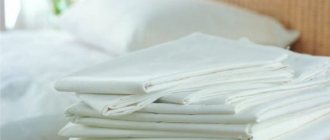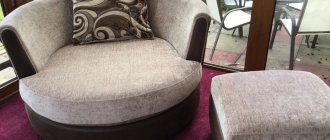Everyone knows how sweet it is to sleep on a soft, lush and fresh pillow. Thanks to the latest technological developments, we are offered several types of fillers. Everyone has their own requirements for a sleeping pillow, but feather filling has remained the most relevant for centuries. Let's consider whether it is possible to wash a feather pillow, how to do it correctly?
Bird feather is a traditional pillow filling.
Feather pillow and its features
Pillows with natural filling have important features - durability, hygroscopicity, breathability, and thermoregulation. To maintain all of the above characteristics, proper care is needed. The natural filler is able to absorb dust and sweat.
Typically, feathers are combined with down to increase softness and reduce weight of the product.
There is a high risk that ticks may appear, which cause a number of pathologies and health problems:
- asthma;
- allergic reaction;
- bronchitis;
- migraine, etc.
The question of how to wash a feather pillow at home remains the most pressing. It is necessary to regularly follow all hygiene rules, drying and washing.
Feathers from waterfowl - ducks, geese, eiders, swans - are used for bedding.
Important! The frequency of general cleaning of products made from natural down is 1-2 times a year. Frequent cleaning of feathers leads to their destruction and reduced service life.
The advantages of such pillows are affordable price, hygroscopicity and breathability.
Preparatory stage
Many housewives wonder whether feather pillows can be washed. In most cases, yes, and both hand and machine washing are suitable for cleaning the product. Regardless of the method you choose, consider the following points:
- washing pillows helps get rid of dust mites and other parasites;
- cleaning pillows at home is a troublesome and time-consuming process that will take several hours of free time;
- if the pillow has not been washed for more than 2-3 years, be sure to use detergent;
- Find out what feather and down fill your product. Only pillows made from feathers of waterfowl (goose, duck, etc.) can be washed;
- if chicken feathers are used as a filler, it is better to take such a product to a specialized dry cleaner, where it will be dry cleaned;
- To improve the result of wet cleaning, first beat the pillows well.
If you are allergic to household chemicals, use a soap solution and a few drops of aromatic lavender or cypress oil to wash pillows (such odors repel linen mites).
How to properly prepare a feather pillow for cleaning
When starting the filler cleaning procedure, you need to know that wet cleaning is carried out using two methods:
- in the washing machine;
- handwash.
They need to be cleaned once a year.
For the procedure in the washing machine, purchase covers made of thick cotton fabric in advance. You can make them yourself at home.
In any case, it is impossible to process the entire product.
Let's decide on the size of the bags:
- Let's measure the length of the pillow.
- The length of the cover should be doubled, but the width remains the same.
- One pillow will need 2-3 covers.
In preparation for machine washing, you need to sew several covers from chintz or other thin cotton fabric without holes.
Before placing the pillow in the drum, carry out a few simple steps:
- Beat the pillow with a clapper, ridding it of dust.
- Carefully rip open one edge of the cover for the filling.
- Transfer the contents into prepared bags, filling each one halfway.
- Sew up the free edges of the covers.
- Place in the washing machine and turn on the delicate or hand wash cycle.
It is better not to use standard powder, since its particles are difficult to rinse out and may remain in the pillow filling.
Helpful advice! The pillowcase needs to be beaten out well and washed separately. The ideal option is to replace the napkin with a new one.
You can sew a new cover from thick fabric.
Preparation for the procedure
The preparatory stage includes several sequential actions:
- cleaning the pillow from dust;
- preparing laundry bags;
- distribution of feathers from pillows to bags.
Dust accumulated during the operation of the product must be removed using a regular carpet flapper.
A vacuum cleaner is not an assistant in this matter - maximum power can harm the filler, and reducing the force of impact will not give the desired results.
The next step is to sew special bags in which the filling will be placed during washing. It is not advisable to wash the entire pillow. A dense layer of filler in the product will not allow for high-quality cleaning, but it can form into lumps that dry poorly and cake.
It is optimal to sew 4 bags of thick cotton fabric measuring about 25-30 cm in length and the same in width.
According to reviews from experienced users, the best material option is teak.
It will keep fluff and small feathers from trying to escape the cover during washing. But gauze, even in several layers, should not be used.
An alternative to several bags is one large one, which is twice the length of the bedspread. For standard pillow sizes, the length of the cover will be one hundred and forty centimeters.
The most important point is the distribution of the filler into the bags . To do this you need:
- Close all doors and windows to prevent drafts.
- Spread a sheet on a flat surface and place a pillow on it.
- Carefully rip the napkin along the seam.
- Transfer the feathers into bags and sew them up carefully.
Before placing the filler in the laundry bags, you should spray them with water from a spray bottle. Thanks to this, the fluff will not fly around.
If the bedside table is in satisfactory condition, it is shaken off from fluff, washed and reused. If desired, you can sew a new cover.
Old pillowcases are used as laundry bags . Before use, you should make sure that the fabric is intact and thick enough.
Washing a pillow in an automatic machine
For washing, use only gel detergents intended for delicate fabrics. The use of powdered laundry detergent is not recommended.
Suitable preparations for washing down and feather filling are gel-like products for delicate fabrics or special substances for natural fibers.
Place tennis balls or special soft balls with spikes in the drum. When washing the feather filling, they will be able to prevent clumping.
During its operation, the balls “pound” the product, removing all contaminants. When cleaning feather filling, they prevent it from clumping into one lump.
Important! Do not wash feathers in hot water. Maximum temperature – +30 degrees. Spin speed is minimal or completely rejected.
Ideally, the machine is equipped with a “Duvet” mode.
Hand wash pillow
The procedure for washing a feather pillow by hand is considered more labor-intensive.
The manual method is more labor-intensive than processing in a washing machine.
Action steps:
- pour water heated to 30*C into a bathtub or large basin;
- add gel detergent and stir by hand;
- rip the diaper on one side and transfer the contents into a container with water;
- soak and leave for 4 hours;
- Collect part of the filler with a large colander, rinse gently under a tap with running water and transfer to a dry container. Do this with all the filler.
- change the water in the basin or bathtub, add detergent again;
- transfer the feathers into a prepared container and rub them with your hands;
- repeat the procedure with a colander, thoroughly washing the feathers under running water.
- squeeze out the moisture with your hands.
This method allows you to control each stage and avoid damage to the filler.
Helpful information! It is recommended to wash pillows filled with swan down by hand if your machine does not have a “swan down wash” function.
If it is not possible to select the minimum spin, it is better to turn it off.
How to wash by hand?
Many people associate washing by hand with hard work. But in reality there is nothing complicated about it. The algorithm of actions should be as follows:
- Fill the bath with water whose temperature is about 30 degrees. It should be enough to keep the fluff on the surface.
- Dissolve the cleaning product, add laundry soap, do not use bleach.
- Pour feathers and down into the bath; there is no need to use laundry bags.
- Wait 2 hours.
- Gently clean the soaked filler by squeezing it with your palms.
- Collect the feathers in a colander and rinse under the tap or rinse in a basin filled with clean water.
- Squeeze with your hands and transfer to dry material.
During the rinsing process, you can drop a little essential oil or a tablespoon of vinegar into the water. This will get rid of the musty smell.
There is a faster hand washing method:
- Dissolve the cleaning agent in water whose temperature is less than 30 degrees.
- Open the pillowcase and pour its contents into three old pillowcases and sew them up.
- Place in the solution and, pressing with your hands, walk over the entire surface of the improvised bedding.
- Rinse at least 3 times.
- Wring out and hang the bedclothes to dry on a clothesline, shaking occasionally.
Important! The use of this technique reduces the quality of product cleaning.
To ensure that the feathers dry well, fluff up and do not get matted, wash your bedding in the warm season.
Steam cleaning
One of the cleaning methods is steam. To do this, you will need a steam cleaner or a regular iron with a steam function.
A little-known method for caring for feather pillows.
- Secure the pillow in a vertical position.
- Treat the surface of the product with steam on both sides.
- Repeat the procedure 3 more times with an interval of 10-15 minutes.
- Hang to dry in the sun.
- After drying, straighten the filler with your hands.
Steam cleaning, although not like washing, will still protect and refresh your bedding.
Steam cleaning is not a complete wash. It will just secure and update the products. Dust mites, microorganisms and bacteria die under the influence of steam. The pillow becomes clean and acquires freshness and a pleasant aroma.
The hot air of the steam generator has a detrimental effect on microorganisms, bacteria, and dust mites.
Dry air cleaning
Dry air cleaning is carried out in dry cleaners that have special equipment. You can restore a product in this way in just 15 minutes.
Note! This type of cleaning is also applicable for chicken feathers.
As a result, the cleaned fluff is placed in a new pillowcase, the cost of which is included in the price of the service. The pillow becomes fuller and softer when exposed to an ozonator, which directs a powerful stream of air onto the feathers.
How much this service will cost depends on the salon.
Proper drying of pillows after washing is an important stage of the hygiene procedure.
We have already studied the features of washing down and feathers. An equally important step in the hygiene procedure is proper drying of the filler. You should not leave feathers wet - the filler sticks together, becomes moldy and acquires an unpleasant odor. How to do it right?
It is important to completely rid the feathers of moisture. Otherwise, fungi and pathogens will begin to multiply in them.
- Dry in clean air. This procedure can only be carried out on warm summer days. Mash the lumps with your hands and place them in fabric bags. Hang them in the shade so that the wind blows on them from all sides. Drying feathers in the sun can cause the feathers to lose their elasticity and structure. Periodically shake and knead the feathers in the bags - improves ventilation.
- Drying on a heating battery. In the cold, the pillow acquires the smell of freshness. But frost can only kill germs and not dry out the fluff. Therefore, in winter it is better to dry pillows on radiators.
- Dry indoors. The most correct method is if you have a free room. It is recommended to thoroughly ventilate the room before drying. Place a moisture-absorbing fabric folded in several layers on a vertical surface. Lay out the feathers in a thin layer and stir them periodically with your hands.
- Fill the filling with dried feathers and sew up the edge.
The best time of year to wash feather pillows is summer. Thanks to the high temperature, the moisture will evaporate quickly and the product will dry in 1-2 days.
Helpful information! Along with the dried feathers, you can add a little hops to the filler. Its smell has a calming effect on the nervous system and promotes healthy sleep.
Knowing how to properly clean and dry the feather filling of a pillow, you can extend its life.
Proper drying
An equally important step in cleaning this bedding is drying. A mistake made at this stage can devalue all the efforts made.
The basic rule is no rush; complete drying of the feather filler takes about three days.
In order not to spoil the result, you must follow the recommendations:
spread the feathers and fluff on a dry cloth or paper, stirring during the drying process;- cover the top with gauze so that the fluff does not fly away;
- it is allowed to dry down near the battery, but not on it;
- when drying the filler in bags, they should be hung in the air, out of sunlight, and periodically beat them with your hands;
- using a hairdryer is possible provided that the distance to the filler is at least twenty centimeters and the continuous exposure time is no more than ten minutes.
After drying, the filler is transferred to a clean bedsheet and sewn up . To distribute the filler evenly, shake the pillow or lightly beat both sides of the product with a clapper. To prevent the diaper from getting dirty, you can put an additional cover on it.
Useful tips for caring for feather products
In order for the feather filling of your favorite pillow to delight you with its aroma for a long time and give you a good and healthy sleep, you need to follow simple recommendations:
The product should be whisked once a day. It is better to do this in the morning so that the filler regains its shape during the day.
- Every morning after sleep, fluff the pillow with your hands - helps saturate the oxygen and elasticity of the feathers.
- Ventilate products in dry weather at least 2 times a month. Do not place in direct sunlight! In winter, ventilate for several hours in the open air.
- Periodically remove dust from the pillow by beating it on both sides with a flat plastic clapper.
- Do not store the product in plastic bags. For this purpose, it is recommended to use a cover made of natural fabric.
- To prevent contamination of the pillowcase, it is recommended to use an additional chintz pillowcase.
- Do not lie down on a pillow with wet hair - moisture quickly destroys the structure of the fluff.
- Dirty feathers contain harmful bacteria. If the pillow has been stored in the attic or closet for a long time, do not rush to use it. It is recommended to rip open the pillowcase and make sure that the fungus has not affected the filling and the pillowcase.
- The result of improper care of feather filling is the accumulation of microscopic mites that are hazardous to health.
Thorough cleaning of the feathers at least once a year is a must for caring for pillows.
All of the above recommendations are suitable for any type of natural feather filling.
Important! Pathogenic microorganisms are found in the saliva and sweat of a sick person. They are easily absorbed into hygroscopic fluff, causing a relapse of the disease. Therefore, the pillow of a sick person should be steamed.
Traditional methods for cleaning pillows from dust and dirt
Grandmother's methods are used to clean and disinfect pillows. They have not lost their relevance. These methods are natural and do not require a lot of time and money.
Pre-soaking with lemon juice
The method is suitable as the first stage of washing. Lemon juice is a natural brightener and flavoring agent. The down, feathers and bedding will become white and will be cleared of old stains and musty smells.
Instructions:
- Squeeze the juice of 5-6 lemons, strain, removing the pulp and seeds.
- Boil 3 liters of water, add all the juice.
- Place the pillow in a basin and fill it with a hot solution of juice and water. The product must be completely covered.
- Leave for 2-3 hours. Afterwards, squeeze a little and wash as usual.
This method is suitable for small pillows. Lemon will add lightness and volume to the feather filler after drying. Such prevention should not be carried out more than once a year.
Dry cleaning with baking soda and tea tree essential oil
These components for dry cleaning of pillows will help you carry out hygiene procedures easily and simply. Baking soda will get rid of yellowness and whiten the feathers and feathers, and the essential oil will aromatize and get rid of ticks and other bacteria.
Instructions:
- Place 100 g of baking soda in a bowl with a wide bottom.
- Add 12 drops of tea tree oil, mix thoroughly until the components are completely combined.
- Place a pillow in the basin and evenly distribute the mixture in a thin layer over the surfaces on both sides.
- Leave for 45-60 minutes.
- Thoroughly shake out the pillow after the time has elapsed and vacuum it.
After this treatment, bedding does not require wet washing. Cleaning can be done every 5-7 months.
conclusions
Following simple recommendations and rules for caring for feather filling will help maintain health, well-being and healthy sleep for all family members. If it is not possible to wash feathers at home, then it is better to use dry cleaning services.
If it is not possible to wash it at home, it is advisable to have the pillow dry cleaned.
The filler is placed in a special machine, the down and feathers are effectively cleaned in a washing disinfectant solution and treated with hot steam. As a result of this procedure, all dust mites die. To destroy bacteria and pathogenic microbes, a quartz treatment and intensive air cleaning procedure are followed.
Professionals will clean and disinfect the down, after which they will fill a new pillowcase with it.
Disinfection of the filler
Sebum, dust, microflora and mites densely “inhabit” the pillow. Ensure yourself a healthy sleep by getting rid of uninvited guests. The filler is disinfected in the following ways:
- Ferry. This is discussed above.
- Drying in the sun.
- Withstanding in the cold.
- Using chlorine bleach. You need to soak feather bags in it before washing.
- Add 3-4 drops of lavender, cypress, and tea tree oils to the laundry detergent. Their scent repels dust mites.
- After pre-soaking the feathers in the following composition: 10 liters of water, 100 ml of ammonia 10%, 1 tsp. boric acid, 500 g of soap. After an hour, put the feathers in the wash.
